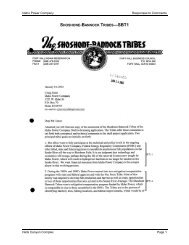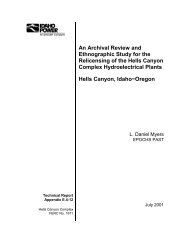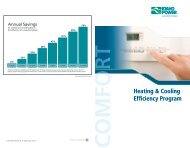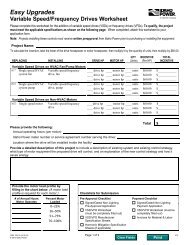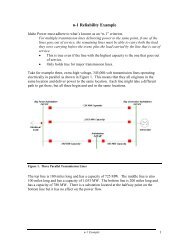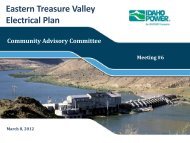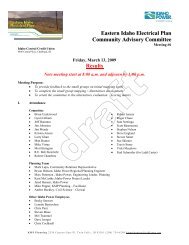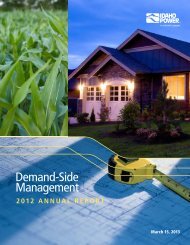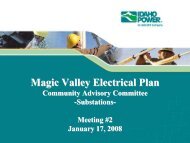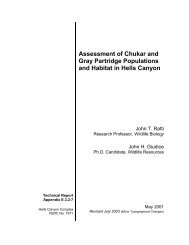Snake River White Sturgeon Conservation Plan ... - Idaho Power
Snake River White Sturgeon Conservation Plan ... - Idaho Power
Snake River White Sturgeon Conservation Plan ... - Idaho Power
Create successful ePaper yourself
Turn your PDF publications into a flip-book with our unique Google optimized e-Paper software.
<strong>Idaho</strong> <strong>Power</strong> CompanyChapter 4: Conceptual Design for <strong>White</strong> <strong>Sturgeon</strong> Passage Facilities4.2.3.2. Biological EffectivenessFish lifts have been effective in passing sturgeon. The main factor that determines overalleffectiveness is the system’s ability to attract migrating fish to the entrance chamber. This abilityis a function of the entrance location at a dam and the attraction-water system. Entranceconditions for upstream passage are discussed in more detail in Section 4.2.7.The primary advantage of a lift over a ladder is that the entrance can be tailored to the benthicnature of sturgeon, so this type of passage may be more efficient. In addition, lifts physicallytake up less space than ladders and can be more easily adapted to the conditions at individualsites. Lifts are expected to be more economical to build for dams with higher head because thegreater height simply requires extending the range of the lifting mechanism, rather thanincreasing the plan area that extending a ladder requires. With proper control of attraction water,a fish lift can be used to attract multiple species, whereas the hydraulic design of a fish laddertends to be more species specific. Fish lifts also have certain advantages over fish locks. Becausemodern fish locks use machinery to lift a crowder, their mechanical complexity and maintenancerequirements are similar to those for a fish lift. However, lifts have shorter cycle times becausethey do not have to move large quantities of water during operation, so lifts have a greatercapacity for transporting fish. Finally, for high-head dams, a fish lift would probably be moreeconomical than fish locks because the cost of building a fish lock increases as the height of thestructure—and therefore the water pressure—increases. In addition to passing the fish directlyinto the forebay, a fish lift is also readily adaptable as a shorter lift. It can be used as part of afacility for sorting fish and transporting them by truck. Therefore, in addition to passing fishdirectly into the forebay, lifts can be adapted to a trap and transport method for a permanent,temporary, or seasonal facility for passing fish.The primary disadvantage of a fish lift is the increased O&M costs associated with a mechanicalsystem. Winter operation would also present operational problems. In fact, we are not aware ofany fish lifts that operate during the winter. Fortunately, sturgeon are less active during most ofthe winter.4.2.3.3. CostsAs previously mentioned, an advantage of a fish lift over a fish ladder is that a lift is moreeconomical to construct on high dams. One example of a lift on a high dam is at Round ButteDevelopment on the Deschutes <strong>River</strong> in central Oregon. Although it is no longer in operation,the Round Butte fish lift used an aerial tram system to lift fish over the dam into the forebay365 ft above the tailrace. Figure 13 shows a schematic drawing of an aerial tram system. Anotheroption that could be investigated would use an inclined rail system to lift the fish over the dam.This option is also illustrated in Figure 13. Both designs could be advantageous at dams withfluctuating forebay elevations.In 1990, a second fish lift was constructed at the Conowingo Dam on the Susquehanna <strong>River</strong> inMaryland. This 40-ft lift can place the fish into a sorting tank from which they can be releasedinto the forebay or loaded onto a truck and transported upstream. The construction costs for thislift were just under $12 million, with an estimated annual O&M cost of $400,000 (Francfortet al. 1994).Hells Canyon Complex Page 19



